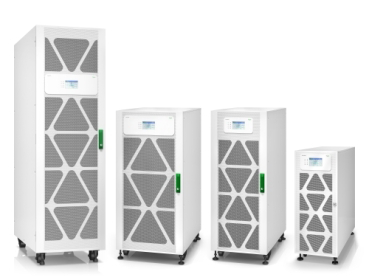computational method
The number of 1.12V individual batteries N: N=V ÷ 22V The number of individual batteries is 6N
2. Battery working current I: I=P total ÷ V
3. Actual battery capacity C: C=l × T ÷ Kh
For example, if a power supply with a power of 1KVA has a backup time of 4 hours and the model of the Coaster UPS is HP9101H, V=36V, then
1) N=36V-12V=3 sections
2)I=1000VA-36V=28A
3)C=24Ax4H÷0.9=124AH
4) The battery capacity can be selected as 3 cells per 100AH group or 6 cells per 65AH group. The selection results may vary depending on the user’s needs and cost considerations. Note: The commonly used capacity specifications for 12V batteries are 7Ah, 17Ah, 24Ah, 38Ah, 65Ah, 100Ah, and 200Ah.
Battery calculation method:
For example, a Shante 40KVAUPS power supply with a DC voltage of 384V and 32 12V batteries per set. If a backup time of 2 hours is required, the calculated battery capacity is: 40000VA * 2H/(0.7 * 384V)=297AH. Therefore, 3 sets of 100AH batteries are selected, totaling 96 batteries.
The current of the battery pack is 40KVA/384V=104A, so a 50mm2 cable is selected for the battery connection
Total number of batteries=(power/DC voltage * hours)/ampere hour per block * number of blocks per group
The power is the power of the UPS, and the DC voltage is the voltage required for UPS battery power supply. The DC voltage of UPS varies for different powers, and the minimum number of required batteries per group is the minimum number of blocks. Generally, when configuring batteries, it must be an integer multiple of the number of blocks per group. The common UPS DC voltage and the number of blocks per group are as follows (each battery block is calculated based on 12V):
For example, configuring a 5KVA delayed 8-hour UPS with a power of 5000, a DC voltage of 96V, 8 batteries per group, and 100AH batteries requires a total of 32 batteries (5000/96 * 8)/100 * 8=32
How many UPS batteries are configured? For example, for a 20KVA UPS, how many batteries are needed for the next hour, and then a Panasonic 12V, 65AH battery is selected?
Give you a decomposition step and algorithm! Easy for you to understand
1. Check the DC voltage of the host (usually divided into 192V and 240V) and the power factor of the host (usually there are three types: 0.7, 0.8, and 0.9)
2. Calculate the required battery capacity for one hour (assuming the power factor of the 20K machine is 0.7 DC voltage 240V)
Calculation formula: Battery capacity=host power * power factor/DC voltage * time, that is, 20000 * 0.7/240 * 1=58.3333AH3. Because the battery voltage is 12V and the DC voltage is 240V1 per hour, the minimum battery capacity required is 58.3333. Therefore, 20 65AH batteries with 240V/12V are needed, and 20 65AH batteries can supply 20K per hour.


